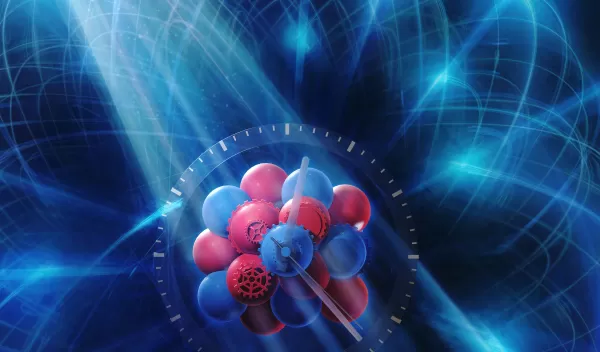
Milestone for novel atomic clock
An international research team has taken a decisive step toward a new generation of atomic clocks. By using nuclear, rather than electronic, transitions in atomic scandium, researchers at the European X-Ray Free-Electron Laser facility have made an advance that some believe will lead to a thousandfold increase in timekeeping precision. The results are published in the journal Nature.
Atomic clocks have numerous applications that benefit from improved accuracy, such as precise positioning using satellite navigation.
Atomic clocks are currently the world's most accurate timekeepers. These clocks have used energy transitions of electrons in the atomic shell of chemical elements, such as cesium, to define time. These electrons can be raised to a higher energy level with microwaves of a known frequency. In the process, they absorb microwave radiation.
An atomic clock shines microwaves at cesium atoms and regulates the frequency of the radiation such that the absorption of the microwaves is maximized; experts call this a resonance. The quartz oscillator that generates the microwaves can be kept so stable in this manner that cesium clocks are accurate to within one second over 300 million years.
Crucial to the accuracy of an atomic clock is the width of the resonance used. Current cesium atomic clocks already use a very narrow resonance, and even more accurate results are being obtained using lattices of strontium. In hopes of leapfrogging ahead, teams around the world have been working for several years on the concept of a "nuclear" clock, which uses transitions in the atomic nucleus rather than in the electron shells of the atom. Nuclear resonances are much sharper than the resonances of electrons, but also much harder to excite.
The team could now excite a promising transition in the nucleus of the element scandium, which is readily available as a high-purity metal foil or as the compound scandium dioxide.
"The breakthrough in resonant excitation of scandium and the precise measurement of its energy opens new avenues not only for nuclear clocks, but also for ultrahigh-precision spectroscopy and precision measurement of fundamental physical effects," says Yuri Shvydko of Argonne National Laboratory.
Texas A&M University's Olga Kocharovskaya, initiator and leader of the project funded by the U.S. National Science Foundation, adds "Such a high accuracy could allow gravitational time dilation to be probed at sub-millimeter distances. This would allow studies of relativistic effects on length scales that were inaccessible so far."
John Gillaspy, NSF program director for Atomic, Molecular and Optical Experimental Physics, said that "this advance is both exciting and timely (double pun intended)."
